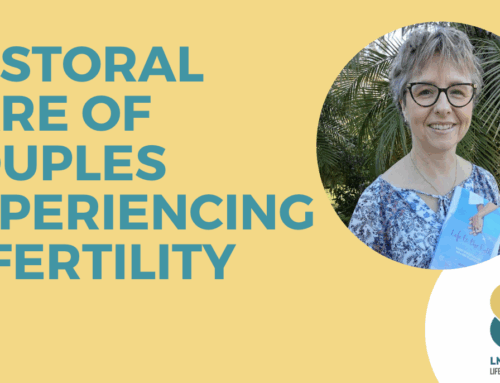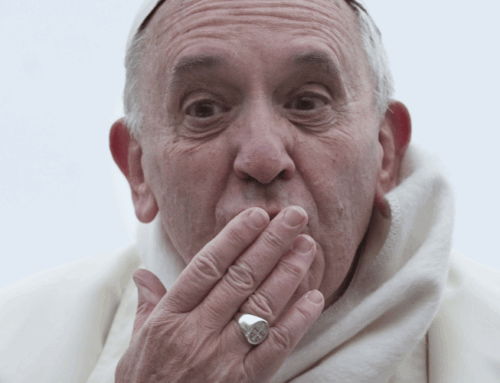This article was first published in ‘The Priest’, the magazine of the Australian Confraternity of Catholic Clergy | Spring 2020, Vol 35. No 2.
Dr Byron & Francine Pirola
Marriage is a hot topic in the Church and in society. There is common agreement that it is important and that it is also changing dramatically and quickly. Marriage breakdown is universally acknowledged as a negative development, yet it is but one of a number about which the Church is rightly concerned.
To respond to the challenges facing families, there have been three Synods on the Family in the last 35 years: 1985, 2014 and 2015. Although Synods happen regularly at the Vatican, these ones on the family, particularly 2014 and 2015 attracted considerable public attention.
Pope Francis’ 2016 encyclical, Amoris Laetitia, reflects this deepening focus on marriage and its importance to the evangelising mission of the Church. At the 2014/2015 synods, whether the discussion was about divorce (and remarriage), contraception, transmission of faith to children, same sex attraction and the political debate about redefining marriage… the common denominator was a lack of adequate formation in the Sacrament of Marriage.
Unsurprisingly, one of the very practical recurring themes to emerge from the Synods on the Family was a call to improve marriage preparation and the concept of a ‘marriage catechumenate’ was raised multiple times in the discussion. This is a welcome initiative, one which is both sorely needed and ‘of its time’.
What is the Marriage Catechumenate?
Most Catholics are familiar with the RCIA (Rite of Christian Initiation for Adults) which is the standard way that adults become Catholics in Australia. The process runs over six or more months and includes weekly classes with other candidates, and several rituals such as the Rites of Acceptance and Election. The RCIA culminates with Baptism, Confirmation and Holy Communion during the Easter Vigil. Formation of the newly confirmed Catholics then continues throughout the Easter season in the period known as ‘mystagogy’.
A marriage catechumenate is similar in concept, running throughout the six to twelve months prior to the wedding and for several years after. The formation would ideally be based in the local parish community in which the couple live and would include several stages of formation activities.
A number of dioceses in the United States have now embarked on formation models consistent with this idea, having engaged couples participate in several sequential initiatives as they prepare for marriage. In Phoenix, Arizona for example, engaged couples begin with an inventory program such as FOCCUS or Prepare/Enrich with a facilitated private feedback session. They then undertake a relationship skills course, usually facilitated by married couples with some input by psychologists. This is followed with a Theology of the Body course (God’s Plan for a Joy Filled Marriage by Ascension Press in this case) and instruction in Fertility Awareness Methods. The process is supervised by the celebrant who interacts with the couple at various points and each step is a compulsory part of their marriage formation.
Other US dioceses are experimenting with similar approaches and an analogous model was proposed by a commission of the Bishops of England and Wales in 2013, (although it has yet to be fully implemented to date). These are early green shoots for a new approach to marriage preparation.
There are two key points of difference a catechumenate model offers, compared to the typical practice in the Australian Church. One is that it emphasises that preparation for marriage is a process that takes place over months (rather just a weekend course); includes multiple parts, rites and stages, and extends past the key event (the wedding), into the newlywed years.
The other is, as Pope Francis has emphasised, the idea of accompaniment; that engaged couples should have the benefit of being accompanied by a more mature married couple who can support them during this key formation period (and is analogous to a Sponsor Couple in the RCIA process).
An evolving idea
As a new idea, the definition of the Marriage Catechumenate is still evolving. Originally presented as a point of comparison with the RCIA, it applied to the period between engagement (corresponding to the catechumenate) and into the newlywed years (corresponding with the mystagogy).
Many bishops and marriage educators are now using the term ‘marriage catechumenate’ more broadly to include both earlier and later stages of formation. For example, in his 2019 address at the Renaissance of Marriage Conference, Archbishop Anthony Fisher called for a comprehensive Marriage Catechumenate spanning from the formation of children and young people through our schools and youth groups, through to enrichment of married couples into the mature years.
Why is a Marriage Catechumenate important?
At the heart of this emerging initiative is a worthy question: do we believe marriage is important in the mission of the Church? Clearly, we do. Apart from the well-known benefits functional marriages provide to children and to society more generally, there is an important theological reason for the Church to be deeply invested in marriage formation.
For centuries before Christ, the Jewish people understood their relationship with God to be nuptial in nature and the Messiah to be the long-awaited bridegroom (see Rev 19:7). Genesis begins with the wedding of the first couple, made in the image and likeness of God (Gn 1:27). Prophets used nuptial language to describe the coming of the Messiah (e.g. Hs 2:16, Jr 2:1-2, Is 54:5) and the Song of Songs describes in poetry the courtship between the Messiah and his bride, Israel (e.g. Sg 8:14).
Many of Jesus’ parables used nuptial analogies (e.g. Mt 22:1-2, Mt 25:1, Jn 14:2) and John the Baptist described himself as ‘the one who precedes the bridegroom’ (Jn 3:28-29). Fulfilling messianic prophecies of abundance, Jesus’ first public miracle was the extravagant provision of wine at a wedding (Jn 2:10).
What does this point to? Jesus calls his people into a nuptial relationship. He gives his body and sheds his blood, just as a husband gives his body and lays down his life in service to his bride, who receives her husband and responds with her own gift of self. This Nuptial Mystery (articulated so thoroughly by St John Paul II in the Theology of the Body and developed by many others) is so central to the redemption story, that without a strong culture of marriage and family life in the Church and in the world, proclaiming the Gospel is made more difficult, if not impossible. Marriage is sacramental because it makes visible to the world this invisible mystery and its demise has a direct impact on the Church’s evangelising efficacy.
The renewal of marriage is thus central to the evangelisation mission of the Church. Not only is the family the central point for evangelisation of its members, it is also a means for reaching out to others in the world. Sadly, many families in our Catholic communities are spiritually impoverished, unable to evangelise their own members yet alone be effective agents of evangelisation in the world.
Sociologically, marital failure comes with a high cost at many levels. Spiritually, we know that the experience of a loving, protective father in one’s childhood, profoundly impacts our ability to relate to God the Father in a healthy way. Marriage bonds fathers to mothers and through them, to their children and its failure leaves each generation with the absence of a positive father experience.
Similarly, the experience of a loving, stable marriage between parents provides a child with confidence in the stability of love. Separating couples have little option but to reassure their children that “mummy and daddy still love you and always will”, but the hard reality is that if mummy and daddy can stop loving each other, how can that be believed? And if married love can’t be relied upon, how can God’s love be trusted? With so much marital breakdown in our communities, is it any wonder that people are sceptical of God’s unconditional love?
Moreover, a loving, stable marriage predisposes one to encounter Christ as one’s bridegroom and to develop a spirituality of deep intimacy and communion. Well–formed couples have an awareness of the sacred nature of their lovemaking. The communion of their bodies in lovemaking reflects the union of their lives and manifests the words of their wedding vows in the language of the body. These couples know that their freely given, total, faithful and fruitful love within their marriage images the love that Christ has for his bride, the Church.
Thus, the decline of marriage in all its myriad dimensions has profound spiritual consequences for the spouses, their children and for the whole Christian community. We cannot possibly address the challenges of furthering the evangelical mission of the Church without also attending to the challenges facing marriage and the family.
A better way of marriage formation
Presently in Australia, marriage formation really only takes place during the engagement period, with a spattering of chastity presenters in high school and some ad hoc marriage enrichment opportunities offered by lay organisations. While the broader vision of a ‘cradle-to-grave’ mindset to marriage formation is correct, the practical question is: where to start?
We would propose that that the most logical place to begin is to first improve what we do in the engagement period, while we develop the longer-term project of building out our approach before engagement and after the wedding. The reason for this initial prioritisation of the engagement period is that there is already an established expectation for formal formation at this time and a natural ‘teachable moment’ where the couple are open to learning.
While it is good that, as a Church, we make it mandatory for couples to participate in some form of marriage preparation, the question we need to ask ourselves is: are we confident what we are offering them will achieve the outcome we seek? If not, then we have work to do.
A good place to start is to recognise that there are three essential elements of good marriage preparation: Catechesis, evangelisation and accompaniment.
- Catechesis: Engaged couples need to be ‘taught’ a number of things including:
- Relationship skills and insights to assist them to build a relationship of emotional, spiritual and physical intimacy… which include building an understanding of their differences and to grow in their understanding of self
- Practical techniques to assist the couple in developing new practices/habits that will foster the essential virtues for a thriving marriage
- Theology including the theology of Marriage, the Theology of the Body and the theology that relates to the liturgy of the Wedding
To maximise educational impact, the preparation process should utilise the best teaching resources and methods available. Ideally this will include the witness of married couples alongside high-quality teaching resources and will be packaged with practical couple-based activities that allow participants to consolidate their learning and experience the benefits to their relationship during course itself.
- Evangelisation: The preparation process should include faith formation and include among its goals:
- To deepen the couple’s faith and prepare them spiritually for the Sacrament of Matrimony including reception of the Sacrament of Reconciliation.
- To lead the couple to fall more deeply in Love with each other, which increases their receptivity to the great Lover, our Lord Jesus Christ
- To re-engage non-practicing Catholic fiancés in their faith and invite non-Catholic fiancés to consider becoming part of the Catholic family
- To motivate the couple to embrace Matrimony as a vocational calling, rather than seeing it as an event (i.e. a wedding) that happens to take place in a church building.
Sadly, many of the formation courses offered to couples do not address this evangelisation agenda. Rather, the courses are more ‘divorce prevention’ strategies and do not actively form couples to live a Catholic marital lifestyle and vocation.
- Accompaniment: The couple preparing for a Catholic marriage is one of many opportunities where Pope Francis’ call to accompany each other in our life journey can be applied. It could be expressed through the following practices:
- Having the engaged couple accompanied by a parish Sponsor Couple during their marriage preparation period.
- Connecting the couple to a worshipping community so that accompaniment can continue beyond the conclusion of the ‘course’ and wedding day
- Encouraging ongoing contact with the Sponsor Couple into the high-risk newlywed years.
- Providing opportunities for follow up through parish or deanery anniversary events, enrichment experiences, and small groups which facilitate couple support networks.
How do we get from here to there?
All this can sound impossibly hard, particularly in the day to day reality of busy parish life. There is no one way to do this and the first step on every journey is just that… taking that first step. This will be an evolving journey where we learn from our own experiences and those of others.
At SmartLoving we are making our own contribution to this journey by seeking to provide high-quality support to parishes who are trying to embrace this vision of a marriage catechumenate. The SmartLoving Engaged course is grounded in a mentality of ‘centrally enabled, locally delivered’, draws on the best of available relational and theological content, and utilises modern online learning and delivery platforms to increase accessibility.
It gives parishes a practical way to do what even five years ago would have been considered impractical… their own high–quality marriage preparation for those marrying in their community. In combination with its sister course (SmartLoving Sponsor), it enables a parish married couple to become a Sponsor couple with no training, as all formation and coaching is provided from within the program platform. Participation in the Sponsor course also meets the need to provide marriage enrichment to married couples.
Canonically, the parish priest is pastorally responsible for the Catholics who reside within his parish boundaries. It makes sense on every level to locate marriage preparation in the parish setting, where the priests of the parish can more easily be involved in a couple’s formation experience. A resource like SmartLoving Engaged and SmartLoving Sponsor is a key part of making the shift to a Marriage Catechumenate model.
Dream big, start small
A marriage catechumenate is a big vision. That’s okay… as a Church we should be comfortable with big visions! The gritty challenge is not to let the largeness of the vision overwhelm or discourage us.
Today, with a bit of boldness and the right resources, a parish can embark on this journey and be up and running in a couple of weeks. It’s time to build a marriage catechumenate and unleash the power of Matrimony to evangelise the world.




Amen to your process of marriage catechumenate
Thanks Helen – we are so excited about the possibilities of renewal of the whole church through marriage.